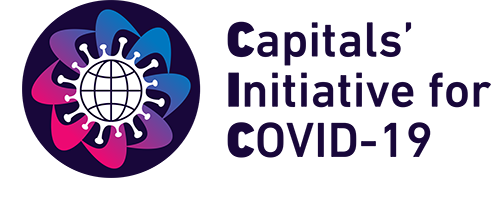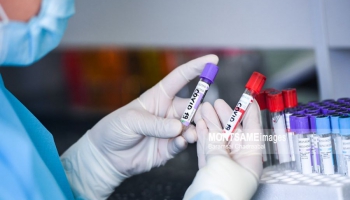
■ Actions firstly taken
○ All people from Wuhan, China, are under investigation.
– The Seoul Metropolitan Government acquired the list of a total of 208 people coming from Wuhan from the Centers for Disease Control and Prevention Korea (KCDC) on January 29.
○ The taskforce team for risk management of Seoul tourism has been formed and operated.
– 15 members from relevant organizations including the Seoul Tourism Organization (STO) and the Seoul Tourism Association; tourism industries, airline companies and accommodations; and tourism academia.
○ The Seoul Metropolitan Government provides YouTube video on live every day to update citizens on the latest information on the novel coronavirus outbreak.
– YouTube video broadcasting has been made on live every day from Thursday, January 30.
■ Progress and next step
○ 25 public health centers and four city-owned hospitals have been selected to handle the outbreak. Isolated beds (31 beds designated by the central government, 20 beds in a regional hub hospital and 20 beds in city-owned hospitals) are readily available.
○ Demand survey was conducted January 27 to provide quarantine goods for the socially disadvantaged and public facilities. The goods are planned to be supported through the city’s disaster management fund.
– Reserved goods of each facility will be utilized first. For additional needs, face masks and hand sanitizers will be bought with the fund and provided to subway stations, buses, welfare facilities for the elderly, childcare centers and gyms.
○ The Seoul Metropolitan Government identified the status of 220,000 ethnic Koreans from China living in Seoul and designated a reporting center (at Southwest Global Center) in an area with higher population of them, giving urgent support to foreign residents and informed them of how to respond to the virus in translated materials (by Women & Family Policy Affairs Office, etc.)
○ Citizens were informed of how to prevent and respond to the virus
– Warning messages were sent to the citizens (January 27 and 28) as the crisis phase was upgraded from caution to alert.
– Online publicity has been conducted via Seoul’s safety app and all online media owned by the city government since January 27.
– Offline publicity has been carried out since January 28 with banners and posters in public places such as subway stations
■ Actions to be taken as the secondary contagion occurs
○ Extend the number of clinics to 58 from the existing 54 (25 public health centers, 5 clinics designated by the central government and 24 regional hub centers) by adding 4 city-owned hospitals (south-west, east, north and north-west).
○ Convert the ER of the Seoul Medical Center into a dedicated ER for patients with the novel coronavirus symptoms.
○ Support to set up a mobile clinic in autonomous districts of higher needs for treatment (7 counties)
○ Utilize mobile screening vehicle and support a portable x-ray to each of 25 public health centers to confirm a flu case
○ Deploy newly registered nurses to selected clinics and have public health centers focus on the novel coronavirus outbreak
○ Add more investigators for fast investigation (from 4 to 11 investigators)
– Add 7 more doctors from city-owned Seobuk, Seonam and Boramae hospitals as investigators
○ Introduce investigation techniques to the first round of epidemiological investigation in cooperation with the special investigation unit of the city in order to better identify previous whereabouts of patients and people who have contacted with them.
– Make sure that all relevant evidences such as CCTV and credit card records are used for thorough investigations.
○ Minimize blind spots by clarifying classification criteria and scope of each case.
– Develop detailed guidelines with the help of the group of experts of infectious diseases on how to classify contacted people out of daily routine and for closer activities.
○ Implement dual monitoring systems for people isolated themselves and those under active watch.
– Monitor people who are already watched by each municipal office so that more meticulous monitoring can be given to those isolated themselves and people under active watch.
○ Reduce the two-step test (1st test by the Seoul Metropolitan Government Research Institute of Public Health & Environment and 2nd test and confirmation by KCDC) to one-step test and confirmation by the Institute
○ Reduce the test time from six hours to four hours by converting the virus test method from general genetic analysis to real-time analysis
○ The infection can be quickly confirmed as private clinics are able to use the diagnostic kit from early February.
○ Have the advisory council of experts of infectious diseases or communication inside the disaster and safety headquarters to control the contagion and reassure citizens more effectively
– Roles of the advisory council: Support epidemiological investigation on spot, provide advice on policy, train staff and plan how to communicate with citizens
○ Build cooperative relations with medical associations by operating the Seoul Cooperative Committee for Infectious Diseases joined by 27 organizations including the Seoul Medical Association and higher-level general hospitals.
– Roles of medical experts: educate people of the manual on how to respond to and prevent infectious diseases
○ Provide daily update on live on YouTube and verify facts to prevent fake news from spreading
– Have a meeting and give update on how many patients are identified and how to react on a daily basis
– Detect fake news on media or online and have experts explain them
○ Have a dedicated section on the website of the Seoul Metropolitan Government where citizens can make a report or suggestion about the outbreak
– Relieve anxiety of citizens by installing an online reporting center
Source: http://english.seoul.go.kr/handling-of-the-novel-coronavirus-outbreak/?keyword=virus&cat=46



![Ulaanbaatar [1.4 million people get first dose of COVID-19 vaccine]](https://www.capitalsinitiative.org/wp-content/uploads/thumbs_dir/60a1e65c706f1-1y44tn2lku72ys2oyrnxem2r2g6vp4si1kmalxcjaug4.jpeg)
![Ulaanbaatar [Over 1.5 million involved in COVID-19 testing nationwide]](https://www.capitalsinitiative.org/wp-content/uploads/thumbs_dir/6010fd2a7d4f2-1xlr25fmpk06yhym156ag12rpcvacepvna64fmsptc4k.jpeg)

![Ulaanbaatar [Hair and beauty salons, non-grocery stores reopen today]](https://www.capitalsinitiative.org/wp-content/uploads/thumbs_dir/600baab4cff61-1xlr1u6xb5g4y36pw0dcqpiw8pax34lczrv0lk7tvj50.jpeg)
